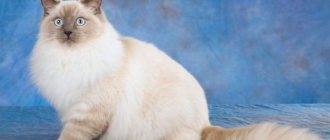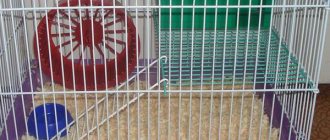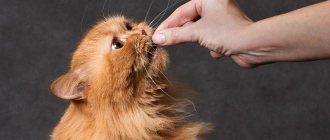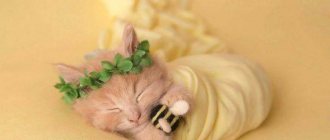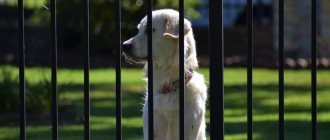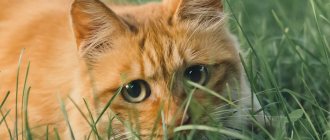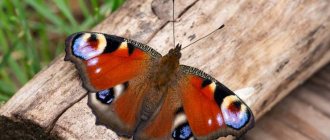The future owner chooses a kitten not only based on its exterior and pedigree level. Often the main criterion is the pet’s tenderness and devotion. The most affectionate cat breeds that are popular today are Ragdoll, Sacred Burmese, Burmese, Nibelung, Russian Blue.
Burmese cat
Watch a video about the most affectionate cat breeds on our Youtube channel Mr. Cat:
Ragdoll
In the 1960s In the United States of America, breeders crossed Burmese and Angora cats, resulting in a large and clumsy Ragdoll, whose name translates as “rag doll” for its ability to literally go limp when held. It’s unlikely that a stern animal could be called that. From the very beginning, cats of this breed have established themselves as playful companions, deprived of the ability to show aggression and disobedience, but willing to receive sufficient attention and care.
Ragdoll feels calm during the photo shoot.
The downside of the breed can be considered its dimensions, an adult representative reaches 10 kg in weight, and excessive fluffiness. This means he eats a lot and requires constant care.
The big advantage that compensates for the shortcomings is conduct and flexibility. Such a friend can be safely walked in a harness and trained to use various “cat gadgets.” Because of trust and tolerance, the pet will easily get along in a family with children.
On average, this cat rarely suffers from diseases and can live up to 16 years.
Exotic shorthair.
In the same year and in the same country, another cat was born, with a character reminiscent of a dog. Exotics are distinguished by their intelligence, peacefulness, and, of course, extraordinary appearance, inherited from the ancestors of the Persian and American Shorthair, and the parents were crossed to obtain new colors from the Persians.
A distinctive feature of the breed is hypersociality. It is not a burden for the exotic to live next to other pets and small family members, thanks to its sociality. He is able to carry out simple commands. However, such a cat suffers loneliness very painfully; he always needs company, but he does not notice any attachment to his owner. There are often representatives who take a long time to get used to new people, so his trust is worth long days and weeks of spending time together.
Despite their appearance, these cats have good health and an average life expectancy of 12-15 years.
Siamese
One of the most famous breeds. For a long time, its representatives lived only on the territory of the ancient state of Siam (existed until 1932) in Indochina. They lived in palaces and temples.
They appeared on European lands thanks to a pair of cats given by the King of Siam to the British Consul. First, cats set foot on British lands, then they appeared in the States. Initially, Siamese were very similar to Thai cats.
Modern representatives of the breed have a more elongated and refined silhouette.
They have a cheerful and active disposition. Very fast and smart. They love to explore everything. They love communication and “talk” a lot themselves. They are gentle and affectionate with their owners, but can be too annoying and persistent.
They can persistently demand attention to their person. Separation from the owner is tolerated calmly.
Maine Coon
Huge. Powerful. Strong. A real “domestic tiger,” as they say about him, although in appearance he looks more like a lynx with a long squirrel tail. It is believed that the Maine Coon's roots are still in the same place, in the USA, and the first generations were short-haired, but the details of the true origin are unknown to anyone. The name of the breed translates as “Maine raccoon”, which also gives rise to certain thoughts.
Coons are active in the evening and in the morning; they tend to sleep during the day.
Thanks to their composure, it is customary to have such cats in families where there are “more than two”, where there are other pets and where there is a lot of space for everyone, although the Manx raccoon gets along well in a cramped apartment, but one should not forget about the hunter’s instinct, which is developed enough to seeing a victim in a small dog or baby.
The advantage is self-service in matters of luxurious wool, which means complete freedom from the groomer.
A possible disadvantage is the dimensions.
The Maine Coon lives the same way for about 15 years.
Munchkin
Cats similar to Welsh Corgi dogs. Just as touching, with a long body and short legs. Munchkins are surprisingly good-natured and mischievous pets. The favorite pastime of a typical representative of the breed is to pull something off and hide it in a secluded place. Some pets are hungry for unusual food; among munchkins there are lovers of pickles, watermelons and plums.
Munchkin for any kipish, except for a hunger strike. If something interesting happens in the house, in the pet’s opinion, the cat will definitely take part in it. For example, the owner is cleaning, which means the pet will begin to “help” him, being more of a nuisance than of any benefit.
An eternal companion for children, a lover of playing with them, relaxing and learning lessons. Due to the structure of the body and short legs, the breed cannot jump or fall from great heights. This is why children need to be taught that pets must be handled delicately. Otherwise, there is a high probability of seriously injuring the animal.
The munchkin will communicate his desire to get a little attention by meowing or actions. The pet will approach the owner and quietly begin to touch him with his paw, looking expressively. And as soon as the owner understands what’s going on and strokes the pet, it will begin to purr and lie down on its back, exposing its belly for stroking. The Munchkin is a rare cat that loves belly rubs.
When purchasing a pet of a breed that is one of the kindest and most affectionate, you should take into account its human orientation. If the potential owner does not have enough time for such a cat, it is worth considering other breeds.
Persian cat
Modest and quiet breed. These cats try not to be intrusive and show almost no initiative in communication. But they will never refuse affection from the owner of the breed; they will allow themselves to be squeezed and dressed up.
Persians originated in the Old World of the 17th century, in Armenia and Iran, spreading along the way through Turkey to Europe, instantly winning the hearts of breeders and fanciers.
Rumor has it that the animals originally appeared in Russia, and only then came to the East.
Today, this lazy and not very sociable animal has spread throughout the world.
Cats are sedentary, calm and outwardly completely indifferent to others, but despite this they tend to become attached to their owner and his family. They show affection only in response to the owner, without attracting attention the rest of the time.
A significant disadvantage of the breed is heavy shedding.
Persians are the longest-livers among cats; a single character reaches the age of 20 years without suffering from diseases.
Neva Masquerade
These long-haired cats are playful and affectionate, gentle and loyal. They have a calm temperament. Tolerant of children and children's “tenderness”, they will never let out their claws. They do not remember insults and do not take revenge for them. They are smart, perfectly sense the owner’s mood, and distinguish intonations. They know how to respond to a nickname. They easily get along under the same roof with other animals.
The price of a Neva Masquerade with a pedigree starts from 18,000 rubles.
Abyssinian cat
Looking at her, I want to say “elegance itself.”
The breed is one of the most ancient, it was mentioned in an English book of the 19th century, written after the war with Ethiopia (then Abyssinia), features of the breed can be seen even in Egyptian figurines. According to current data, there are two types of Abyssinians: European - more massive and fluffy; American – slender, tall with short hair.
Excessive activity of the breed often leads to disorder in the house and various injuries received during play. Cats are inquisitive, sociable, intelligent, altruistic and picky, do not require special care and do not require anything from the owner except regular active games.
The big problem is the poor health of this animal. By the age of five, a vigorous and cheerful kitten has already accumulated a large number of problems with vision, circulatory system, protein metabolism, bones, etc.
However, all these problems do not prevent the cat from living happily for an average of 13 years.
Fourth place - Canadian Sphynx
Canadian Sphynx Not everyone will like the appearance of the Canadian Sphynx.
He is too different from the usual fluffy cats. A beardless muzzle, huge ears, long thin limbs, wrinkled skin and a hairless, lean body make this unique creature look like an alien. However, Sphynx owners claim that their pets are representatives of one of the most affectionate cat breeds. They establish a psychological connection with a person, allowing them to feel changes in the owner’s mood. Peaceful and intelligent creatures become so attached to people that when they find themselves alone, they become depressed. Hairless Sphynx cats need warmth and care. These cats are extremely sensitive to temperature changes. In the summer heat, you should not allow your pet to bask in the sun for a long time. In winter, it is better to dress the cat in warm overalls. Important! The opinion that keeping naked Sphynx cats is suitable even for allergy sufferers is fundamentally wrong. Attacks of suffocation are caused by the animal's acrid sweat, which is abundantly secreted by the skin in the form of a viscous coating.
Elf and others
In fact, there are many hairless cats, the Peterbald, a native of St. Petersburg (not universally recognized as a breed), the Canadian and Don Sphynx, the origin can be understood from the name, the Elf, bred in the USA in 2006, the Bambino, a breed phenotypically located in the process of becoming... and all of them are not indifferent to people, all are quite affectionate and affectionate, except for the Don Sphynx - this comrade does not like society, noise, children and intrusiveness from humans.
Hairless cats appeared in different countries, sometimes independently of each other, but everyone seemed to have inherited a love for human beings. They are characterized by curiosity and affection. Life expectancy with proper care reaches twenty years. However, serious care is needed, especially when it comes to countries with cold winters.
As for the attitude towards family members, four-legged cats of another species, especially the Canadian Sphynx, are perceived as competitors.
The average lifespan of all these breeds is from 12 to 16 years. Health is relatively good; with age, the risks of developing various diseases increase.
It is worth noting that hairless and hypoallergenic are two different cats. The allergy is caused by the protein in your pet's secretions, not the fur!
Scottish lop-eared
In the list of the most affectionate breeds there must be a place for the Scottish Fold or Scottish Fold. Thanks to its balanced temperament, calm disposition and high intelligence, this cat is considered one of the most popular. She is gentle with all family members, but she chooses only one owner and it is to him that all her love is intended. Fold cats are by nature very active and playful, they happily take part in children's games, but with age, playfulness fades and later they prefer spending time on the owner's lap.
The price starts from 5,000 rubles, the exhibition class costs several times more.
Cornish Rex
One of the most restless, nimble, talkative and intelligent cats.
Cornish is the true embodiment of a dog in a cat's body; he is easy to train, amenable to education, shows interest in children, actively communicates with other pets and boldly, although cautiously, meets new people. This cat also has excellent health and velvety curly fur, and does not require special treatment.
This breed is gaining popularity due to its ability to make an adventure out of absolutely any little thing. The cat becomes the main reason for the owner's daily smiles and giggles; he tries to climb both on the highest cabinet and under it. It is necessary to understand that any object lying in plain sight will become a new toy at the first opportunity.
Communication, which is never enough for this cat, can only be given by a person who is truly ready for the quirks of the Cornish Rex.
Health is average, as is life expectancy.
Oriental cat
A wide, long nose and unusually large ears make these characters stand out from the rest of the species.
We started our journey in Thailand together with close relatives – Siamese cats. Since the 19th century, they have been transported around the world and won the attention of amateurs for a very long time. Until 1977, cats had no standard in terms of color and eye color, and they could also have relatively different fluffiness. Simply put, these guys were not welcome at exhibitions and in aristocratic houses.
Today, there are no direct criteria defining an Oriental cat in most countries. This is just a big, lop-eared, long-muzzled animal that meows a lot and destroys vases on its way.
Quite a large cat, ready to follow its owner around all day. A highly active and intelligent companion, he is always happy to have a person and his family, gets along with other animals, has a craving for incidents and adventures, and is also prone to training.
Breeders recommend walking Orientals on a leash for a couple of hours a day for a calmer behavior of the pet in the house.
With sufficient activity, cats live to be 20 or more, despite not having the best health.
Tonkinese
The breed was developed by crossing Burmese and Siamese cats. The result combined the qualities of both parents, and the best. For example, Tonkinese have a good-natured, phlegmatic temperament, but at the same time they do not have the habit of meowing loudly, like Siamese.
Cats of this breed are incredibly loyal to their owner. In addition, he has high intelligence, trainability and obedience. It won't be difficult to train these cats to walk on a leash.
Sacred Burmese cat
An incredibly beautiful breed with expressive eyes and a mysterious look.
There is no specific date when the Burmese appeared as a separate breed; cats have very ancient origins, but they were recognized in 1925 in France.
Burma was mentioned in ancient Buddhist legends as a goddess guarding the kingdom of the dead.
In the 1960s, the cat came to Europe and then spread to the United States.
The cat has a humble character, which is manifested even in food - it cannot be overfed; the Burmese eats exactly as much as it needs to be satisfied.
A snowflake will give its owner peace of mind. She will not be short-tempered towards children, will not cause curtains to be torn down, and will not declare war on another pet. Balance is the main quality of these blue-eyed people. Cats cannot be trained, but you can set rules and, with a little effort, teach them the manners that an owner needs.
The only thing is that the sacred Burmese have a tendency to mood swings, however, only an attentive owner can notice this.
All such a miracle needs is a house where it can hide for deep sleep, warmth (no drafts) and combing once every two weeks.
The Sacred Burma lives on average 14 years.
Manx
An unusual breed of cat originally from the British Isle of Man. It can perhaps be considered the best breed for children. Why? Due to the lack of a tail.
Breeds such as the Bombay cat, Scottish Fold, American Curl, Devon Rex, and Singapore cat also get along well with children.
This breed has a natural mutation of the spine. As a result, the tail is either completely absent, or present in the form of a stump hidden under the fur, or very short. In some cases, the animal may have a standard length tail.
As one legend goes, Manx cats appeared on the island when the ship of the Spanish Armada sank. The cats that were on the ship swam to the shore and there they gave rise to the breed.
The tailless gene is dominant, so tailless parents will definitely have tailless children. The absence of a tail does not at all prevent the animal from hunting - and it does it perfectly.
Very cheerful, playful and active. They easily tolerate communication with children, since they cannot pull their tail, the most vulnerable part. They will adequately withstand the attack of even several children at once. Very patient and peaceful.
Did you know? In 1970 and 1975, commemorative coins with the image of a Manx cat were issued on the British Isle of Man.
